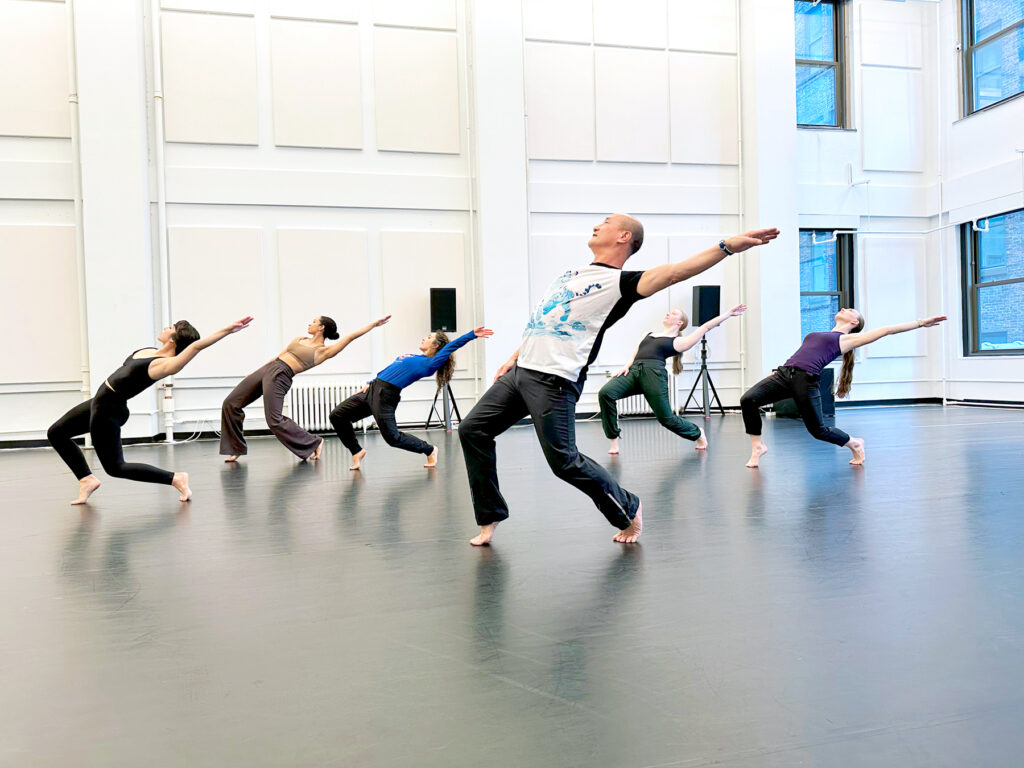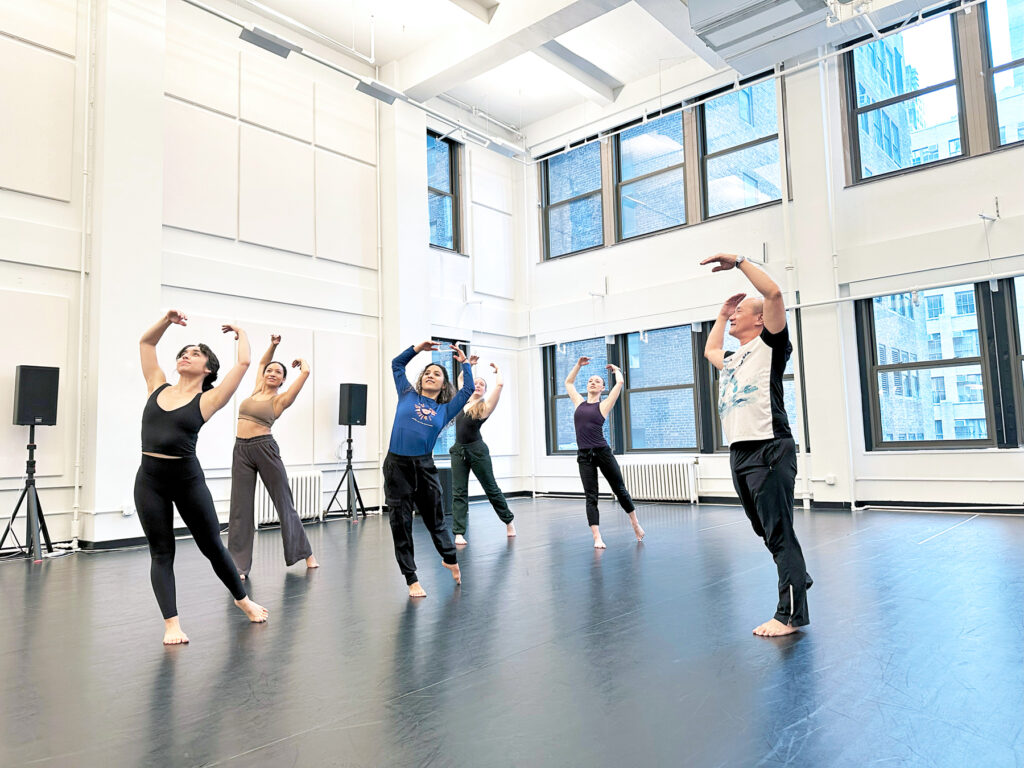Why Richard Chen See’s Students Compare His Class to a Mathematics Course
Any student taking Richard Chen See’s Paul Taylor–style modern class is going to have their musicality challenged. That’s because Chen See, who spent 15 years dancing in the Taylor company, wants to make sure that dancers are able to confidently move between all kinds of phrasing and musical structures. So in his weekly classes at the Taylor Dance West studios in New York City, each exercise is set to a different time signature with varying phrase lengths.
“For instance, if I’m doing bounces at the beginning of class, I will work in a 4/4,” he says. “But then after that, I will do contractions and rolls and spirals in a 3/4. And sometimes I’ll do nine 3s, and sometimes I’ll do eleven 4s, so the dancers’ minds are engaged with listening and letting their body find the phrase.”
Of course, this can be a lot for students to manage when they are also tasked with simultaneously remembering the choreography and working on their technique. One way Chen See breaks down longer, more unfamiliar phrases for his students is by explaining that everything is a composite of either two or three. “So it’s ‘one, two, one, two, three’ to give me a five,” he says as an example. He often ends up counting and calculating so much that students gently rib him for it. “A lot of dancers who’ve taken with me joke about the fact that my class can sound like a mathematics course,” he says. “But it is just rhythmic.”

Another way he helps students—particularly younger ones—who have trouble wrapping their heads around an unfamiliar phrase is by adding his own voice to the music. He says he will “vocally improvise” along with the song to punctuate the rhythms and emphasis he’s after. “It gives them something to hold on to, and then their movement needs to reflect that sound,” he says.
The goal is to give dancers such a strong grasp of a piece’s musical phrasing that they can eventually play against the rhythms. “Your movement can counter-phrase what the music is doing. But until you’re clear about what that phrasing is, it’s very hard for that to feel musical,” he says.
More than anything, Chen See wants students to be able to embody the music in their movement. As much as he teaches them how to dissect the phrasing, he also reminds them that Paul Taylor himself was not a trained musician. “He didn’t read music. But he responded to music,” he says. “And in teaching within his style, I’m trying to get students to learn how to listen and feel.” During his time in the Taylor company, Chen See learned he had to let go of music theory and instead let his body instinctually react to what he was hearing. “Being open to how music makes my body want to move was a great revelation,” he says.

His Favorite Music for Teaching Taylor-Style Classes
Although Chen See typically teaches with a live accompanist at the Taylor studios, he also has a number of albums he turns to for classes when there’s not a musician in the room with him. Here are a few of his favorites.
From Generation to Generation: A Legacy of Lullabies, by Tanja Solnik
“Lullabies have a rocking to them; it’s just sort of repeating. And that’s how children learn rhythm. I actually like to use lullabies like these that aren’t sung in English. Then you can attach to the shape of the word. So you’re not listening to the intent of the words, but you’re listening to the actual rhythm of the word itself.”
Joyful Noise: Disc One and Joyful Noise: Disc Two, by Andy Monroe
“Andy Monroe used to be an accompanist at Taylor, and he did two albums that were not necessarily meant to accompany modern classes, but his whole background was improvisational and a vocalization of classes. And it’s great because he has things that are in sevens and elevens and nines as well as twos, threes, and fours.”
Circlesongs, by Bobby McFerrin
“When I’m doing things where I really need a baseline, I go to Bobby McFerrin’s Circlesongs. At the very beginning, he sets up the rhythm, and it’s just one voice, and then he adds layers and polyrhythms on top of it. So you can see whether or not the dancers can maintain that or play the counter-rhythm to it.”
Uprising, by Bob Marley and the Wailers
“Because I’m Jamaican, I can’t forget Bob Marley’s Uprising. It was his last album. He was looking at making that reggae, bass, ska rhythm, having his own voice with it. He makes a ballad out of ‘Redemption Song.’ So we’re taking what is a very rudimentary rhythm and attempting to be creative and express an idea. I just love the variances in ‘Redemption Song.’ And I also love the message behind it: No matter what our past is, we get to choose our future.”
The post Why Richard Chen See’s Students Compare His Class to a Mathematics Course appeared first on Dance Teacher.